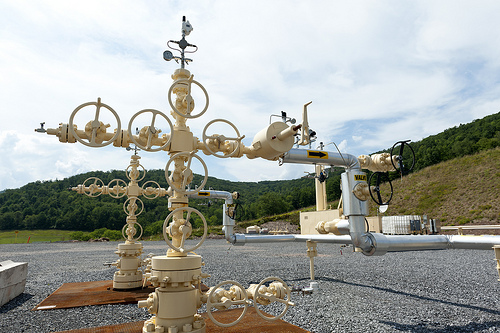
It had an end of an era feel, when Aubrey McClendon, CEO of Chesapeake Energy—one of the cutting edge independents that drove the shale revolution—recently retired, and billionaire investor Carl Icahn upped his share of Chesapeake to 8.9 percent.
Perhaps it is a sign that the first phase of the shale revolution—production of gas and tight oil from hydraulic fracturing—or fracking—seems closer to a more or less accepted fact of American life (not to mention a key driver of the US economic recovery and industrial “insourcing”). But if it is becoming the “new normal,” then what is the next phase of the shale phenomenon?
There are two elements of the next phase, one a suite of domestic issues; second, the question of whether—and to what degree—shale will “go global.”
Domestic issues
The domestic challenges of phase two revolve around (for want of a better term) institutionalizing shale gas (and tight oil) production—including its export. Concerns about safety and environmental impact appear diminished, if not fully addressed. As the major companies have gotten more involved in shale, and its critics gotten louder—including Matt Damon’s new anti-fracking movie, Promised Land—the commissions studying it have yielded improved regulatory standards, procedures, and transparency. Yet press reports still surface raising questions about methane over time leaking into drinking water and concerns over net emissions.
With gas prices at record lows and tight oil production expanding rapidly (already at 6.4 mil b/pd and projected to rise to 7.9mil b/pd in 2014), the issue of increased flaring of gas has become a growing concern. As a recent front page satellite map recently published in the Financial Times illustrated, North Dakota’s flaring can be seen from space. Much of this gas can be captured. Some could power extraction operations, which is already occurring in shale sites. This appears ultimately a manageable problem, but will require the industry to think longer-term and invest in capturing and recycling methane.
The debate on exports is heating up, but the question is less about if and more about limits. Only one firm (Cheniere Energy), of 16 that have filed for export licenses, has been approved by DOE. New exports are unlikely before 2015 and will probably not exceed 10% of production in this decade.
Going Global
Outside North America, shale gas development is still in its embryonic stage. The UK has only just lifted its moratorium on shale gas and exploration has yet to really be launched.
Poland has led Europe in the search for shale, awarding 111 exploration concessions to both domestic and foreign firms. Geology, infrastructure, as well as tax and regulatory policies have limited the amount of exploratory drilling. ExxonMobil withdrew, and Conoco Phillips has abandoned some of its options. Yet Poland is optimistic and is forging ahead, despite production being unlikely before 2015.
Desperate to reduce its dependence on Gazprom, the Ukraine jumped into shale. In January it reached a deal with Royal Dutch Shell to explore for shale. Kiev last year issued a tender to explore for shale gas in western Ukraine, while ExxonMobil and Shell were granted concessions to explore offshore.
In the Asia Pacific, China and Australia boast the largest shale potential, but exploration has barely begun in both nations. In January, China held its second round of auctioning off shale gas blocks, granting concessions to 16 domestic-based companies. Beijing, still 70% dependent on coal in its energy mix, is bullish on shale. But a complex geology and water shortages are hurdles that make substantial production problematic in the near future.
Clearly, the shale revolution remains US-centered. As much as market potential, the degree to which the industry addresses lingering concerns and demonstrates viability will impact the pace and scope of shale’s global dimension.
Robert A. Manning is a senior fellow in the Atlantic Council’s Brent Scowcroft Center on International Security. This piece first appeared on the GE Ideas Lab.
Photo credit: Flickr user Jeremy Buckingham MLC
Image: 7800489750_f532c97c9d.jpg
